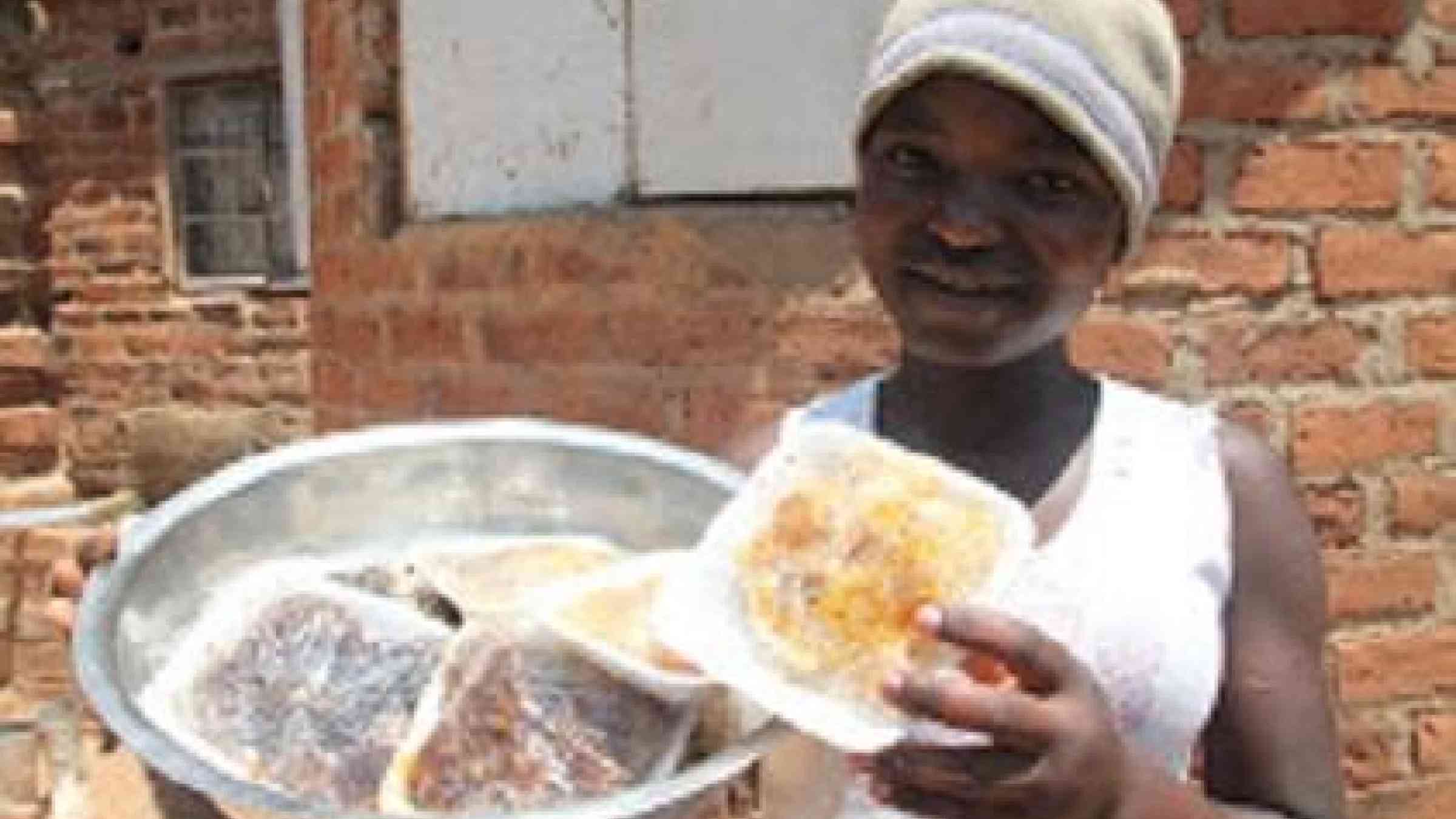Zimbabwe smallholders confront climate change

MASVINGO, Zimbabwe, 26 February 2016 – Zimbabwe has declared a state of disaster in the face of a regional drought, but smallholder farmers are tackling climate change head on by adopting new livelihood strategies to counter the adverse effects.
Such community action is at the core of the Sendai Framework for Disaster Risk Reduction, a 15-year international blueprint adopted in March last year with the aim of saving lives and curbing the economic impact of natural and man-made hazards.
Floods and drought dominate Africa’s disaster profile, affecting around 12.5 million people per year.
Severe dry spells repeatedly hit Zimbabwe, which like neighbouring countries is facing an even tougher situation now given the El Nino weather phenomenon.
According to the 2015 Zimbabwe Vulnerability Assessment Committee report, some 1.5 million people are in need of food aid due to prolonged dry periods during the 2014-2015 farming season.
In Zimbabwe’s Manicaland, Masvingo and Matabeleland provinces, local people are adapting to the harsh new reality.
“We used to watch in confusion and nobody cared to tell us why the skies were behaving like that, but we now understand that the droughts and changing rainfall patterns are due to climate change,” said Mr. Shangi Kunedzimwe, the committee secretary of an irrigation scheme in Masvingo province’s Nyika district.
Officers from Zimbabwe’s Agricultural, Technical and Extension Services (Agritex), the Environmental Management Agency (EMA) and humanitarian NGOs operating in Masvingo are running awareness campaigns for smallholders. Armed with this knowledge, the local farmers organise workshops to educate each other on shifting rainfall patterns and how to curb its effects.
As a result, they are less dependent on rain-fed agriculture for survival, opting instead to use the nearby Rozva Dam, built in 1995, to irrigate crops such as tomatoes, beans, leafy vegetables, potatoes, butternut, groundnuts and green mealies.
The community has formed farming committees with technical and financial support from agencies such as Agritex, the UN’s Food and Agriculture Organization and the Swiss government. Committee member Ms. Sheila Munzwa says the adoption of new farming methods is a result of their acceptance that climate change is a reality.
The dam can hold enough water for up to two years even when rains are poor, Ms. Munzwa says, meaning the community is no longer entirely dependent on rain-fed annual crops such as like maize and is experimenting with drought-resistant crops and small grains like sorghum. The farmers’ groups sell their produce among themselves, to visiting buyers and the local Grain Marketing Board depot when yields are sufficiently high, and they use the money to buy basic foodstuffs and clothes and to pay school and medical fees.
The farmers have collectively applied for a US$48,000 loan from a local agricultural bank to buy seeds, fertiliser, herbicides and other inputs and to repair and maintain irrigation equipment to boost their yields. Other villagers have taken to small income-generating projects such as welding, carpentry and wild fruit vending to counter the effects of drought and enable them to buy basic commodities.
Climate change communication expert and Zimbabwe Open University lecturer, Mr. Peter Makwanya, emphasizes the need to articulate climate change from the point of view of the local people who bear the brunt.
The Sendai Framework identifies investment in disaster risk prevention and reduction through structural and non-structural measures as essential to enhance the economic, social, health and cultural resilience.
Practical actions include those of farmer Mr. Simon Mukuze, who in the last three years has used a discarded plastic container that he calibrated to record rainfall patterns in his village, and shares his observations of reduced rainfall with other farmers.
Mr. Mukuze is part of a 380-member group that has been keeping bees and selling honey since 2014, establishing a market chain and securing a buyer who will purchase raw honey for the next three years. The income helps buy food during lean times, and the drought means they need to enlarge and strengthen the project.
Additional alternative livelihoods include poultry and pig rearing and agroforestry. With support from the Forestry Commission of Zimbabwe (FCZ), Agritex and the Southern Alliance for Indigenous Resources (SAFIRE) a eucalyptus project which aims to cover 1,000 hectares with gum trees by 2017 and will run for the next 28 years is expected to provide nectar for the bees and yield gum poles and pulp that the local community will sell to companies to generate income and combat deforestation.